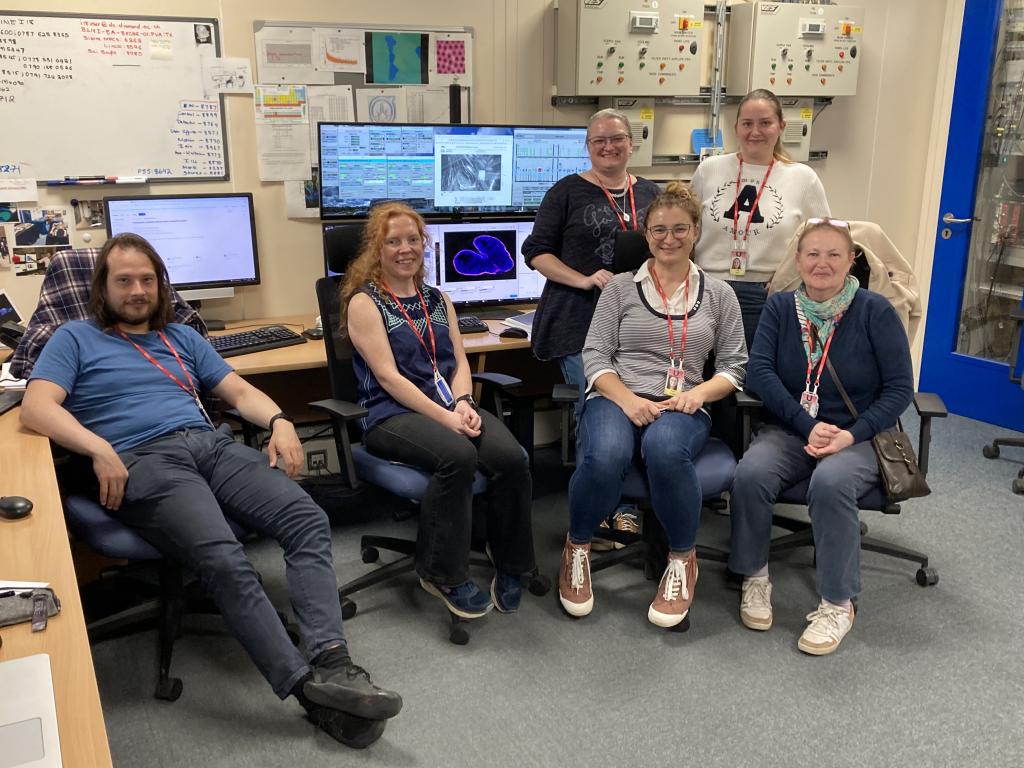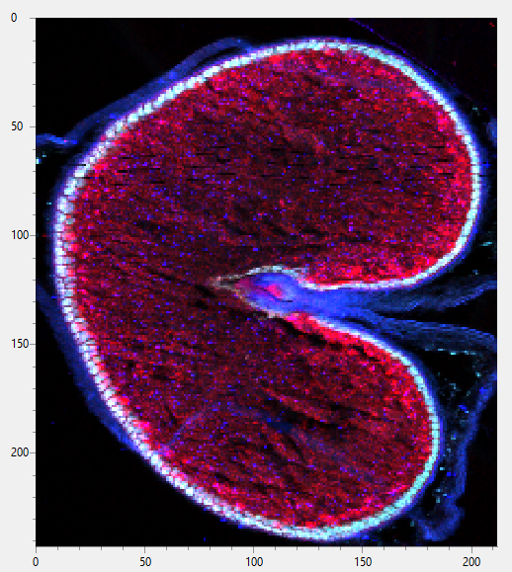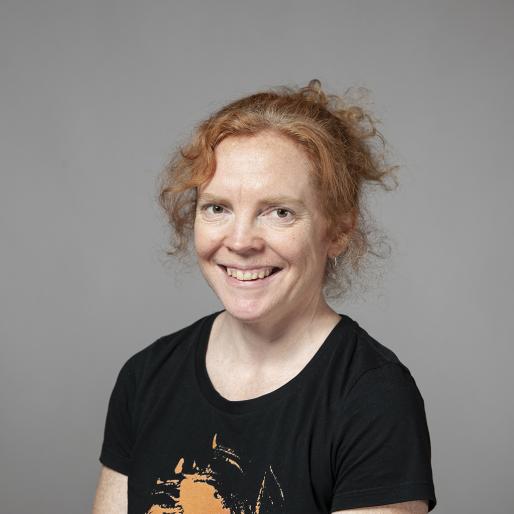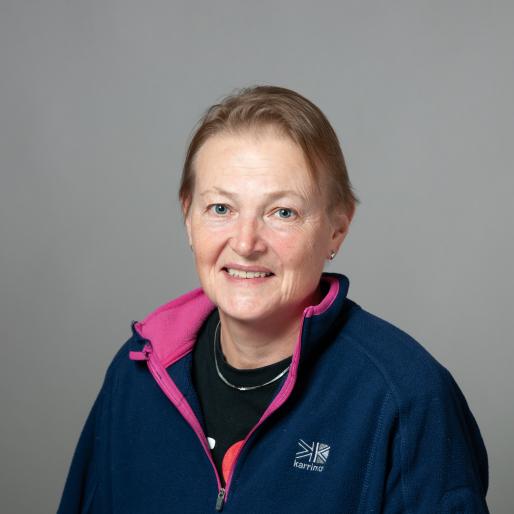The big picture: using wildflower strips for pest control
Rothamsted wheat researchers took a short trip down the M40 to put grain samples under the microscope at the Diamond Light Source at the the Harwell campus near Didcot .
Diamond is the UK’s national synchrotron. It works like a giant microscope, harnessing the power of electrons to produce bright light that scientists can use to study anything from fossils to jet engines to viruses and vaccines. It is 10,000 times more powerful than a traditional microscope.
The machine accelerates electrons to near light speeds so that they give off light 10 billion times brighter than the sun. These bright beams are then directed off into laboratories known as beamlines. Here, scientists use the light to study a vast range of subject matter, from new medicines and treatments for disease to innovative engineering and cutting-edge technology.
So why the need to investigate wheat grains with this powerful tool?
The Delivering Sustainable Wheat (DSW) programme has identified wheat lines developed from crosses between AE Watkins landraces and the spring wheat cultivar Paragon, which contain calcium levels more than 50% higher compared to standard commercial varieties.

Calcium is essential for bone health and muscle function, but as increasing numbers of people move away from dairy – traditionally the richest source of dietary calcium – there is an urgent need for plant-based alternatives that can deliver the same nutritional benefits. Some selected lines have elevated calcium levels, even in the starchy endosperm - the part of the grain used to make white bread. This is exciting as usually minerals are concentrated in the outer bran layers and bound to an antinutrient called phytate.
“This is really promising,” said Dr Anneke Prins, who leads this area of research. “We’re seeing calcium concentrated in specific ‘hotspots’ inside the part of the grain that people actually eat, even in refined flour products.”
It’s not just about how much calcium is there. We need to understand how it’s bound within the grain. That determines whether our bodies can actually make use of it.
The next phase of the research is to examine how well this calcium can be absorbed by the human body – a factor known as bioavailability. That is where the Diamond Light Source synchrotron comes in. At the DLS' Beamline I18, in collaboration with researchers from the Jožef Stefan Institute, University of Ljubljana and University of Nova Gorica (Slovenia), the team are mapping calcium hotspots and analysing their chemical form using a technique known as X-ray absorption near edge structure.
This analysis is vital. “It’s not just about how much calcium is there,” said Prins. “We need to understand how it’s bound within the grain. That determines whether our bodies can actually make use of it.”

Initial images show clear deposits of calcium in the starchy endosperm tissue of the grain, against a background of sulphur from the gluten proteins. Potassium is concentrated in the single layer of aleurone cells which surround the starchy endosperm cells.
“These stunning images are hugely helpful,” said Prins. “However, we still have a long way to go. We are hopeful that ultimately high-calcium wheat will not only offer a more nutritious staple food but also help ease reliance on calcium supplements and dairy, supporting more sustainable and inclusive diets around the world.”
If successful, the findings could pave the way for new varieties of biofortified wheat, helping tackle one of the world’s most persistent hidden hunger problems – all through a simple slice of white bread.

PLANT BIOCHEMIST

Biochemist
Rothamsted Research is the longest-running agricultural research institute in the world. We work from gene to field with a proud history of ground-breaking
discoveries in areas as diverse as crop management, statistical interpretation and soil health. Our founders, in 1843, were the pioneers of modern
agriculture, and we are known for our imaginative science and our collaborative approach to developing innovative farm practice.
Through independent research, we make significant contributions to improving agri-food systems in the UK and internationally, with
economic impact estimated to exceed £3 bn in annual contribution to the UK economy. Our strength lies in our systems approach, which combines strategic research,
interdisciplinary teams and multiple partnerships.
Rothamsted is home to three unique National Bioscience Research Infrastructures which are open to researchers from all over the world:
The Long-Term Experiments,
Rothamsted Insect Survey and the
North Wyke Farm Platform.
We are strategically funded by the Biotechnology and Biological Sciences Research Council (BBSRC), with additional support from other national and
international funding streams, and from industry. We are also supported by the Lawes Agricultural Trust (LAT).
The Biotechnology and Biological Sciences Research Council is part of UK Research and Innovation, a non-departmental public body funded by a grant-in-aid
from the UK government.
BBSRC invests to push back the frontiers of biology and deliver a healthy, prosperous and sustainable future. Through our investments, we build and support a vibrant,
dynamic and inclusive community which delivers ground-breaking discoveries and develops bio-based solutions that contribute to tackling global challenges,
such as sustainable food production, climate change, and healthy ageing.
As part of UK Research and Innovation (UKRI), we not only play a pivotal role in fostering connections that enable the UK’s world-class research and innovation system
to flourish – we also have a responsibility to enable the creation of a research culture that is diverse, resilient, and engaged.
BBSRC proudly forges interdisciplinary collaborations where excellent bioscience has a fundamental role. We pioneer approaches that enhance the equality, diversity,
and inclusion of talent by investing in people, infrastructure, technologies, and partnerships on a global scale.
The Lawes Agricultural Trust, established in 1889 by Sir John Bennet Lawes, supports Rothamsted Research’s national and international agricultural science through the provision of land, facilities and funding. LAT, a charitable trust, owns the estates at Harpenden and Broom's Barn, including many of the buildings used by Rothamsted Research. LAT provides an annual research grant to the Director, accommodation for nearly 200 people, and support for fellowships for young scientists from developing countries. LAT also makes capital grants to help modernise facilities at Rothamsted, or invests in new buildings.